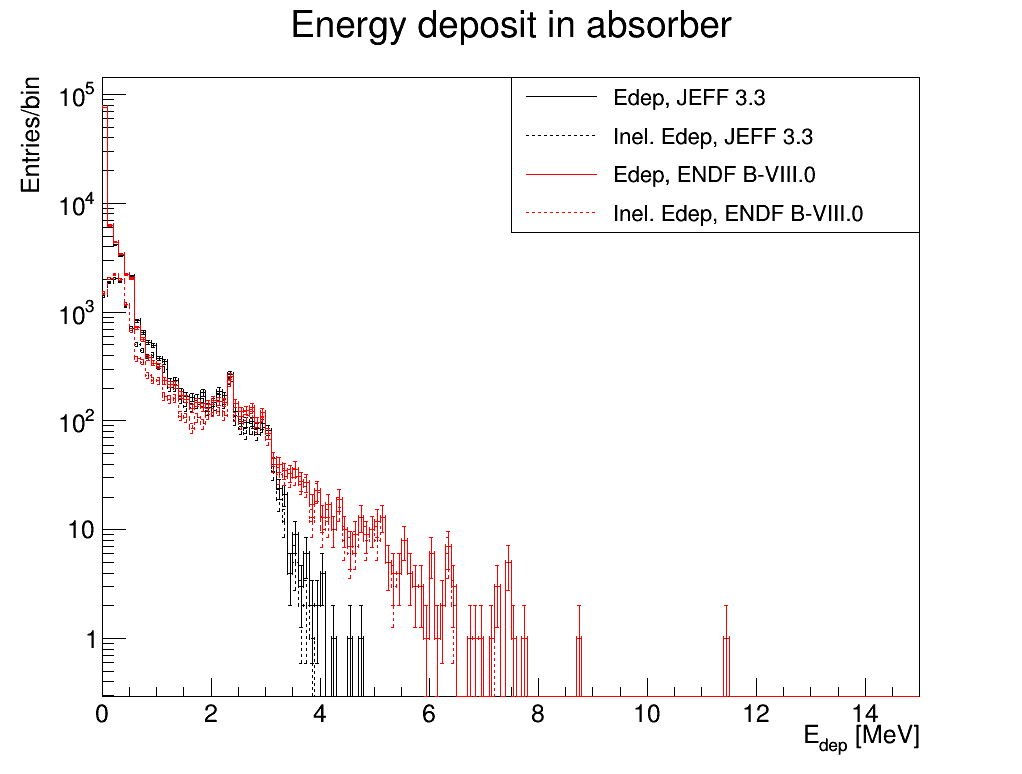Hello everyone,
in my application, I simulate the propagation of neutrons through an absorber plate. The absorber materials are Aluminium, Copper, Iron, Lead, Paraffin or Concrete. I use Geant4 version 10.5. and a physics list including the high precision neutron package (attached). For the neutron data, I tried G4NDL4.5, ENDF B-VIII.0 and JEFF-3.3 libraries. I set the environment variable G4NEUTRONHP_DO_NOT_ADJUST_FINAL_STATE=1 .
I am most interested in the correct simulation of the neutron propagation. However, I looked at the energy deposit and the production of secondary gamma rays by neutron interactions (capture, (n,n’gamma)) in the absorber. Here, I get a strange behavior for almost all materials. Even for the (n,n’gamma) scattering, I get energy deposits larger than the initial neutron energy. When looking at the gamma energies, I get strange values. An example with ENDF-BVIII.0 library: For neutrons of 4.2 MeV interacting with aluminium, sometimes 3 gamma rays of approximately 2.99 MeV are created in 1 inelastic scattering reaction. Aluminium has an excited state of such an energy (ENSDF database), but then one would expect 1 gamma of this energy, not 3? Using JEFF-3.3, I haven’t seen this happen.
In this plot you can see the energy deposit spectrum of 4.2 MeV neutrons in 3cm aluminium:
To get the energy deposit, I do in my stepping action:
if(volume_prestep->GetName() == “Absorber” ){
fEDep+=step->GetTotalEnergyDeposit()/CLHEP::MeV;
}
, while fEDep is collected during one event. At the end of the event, it is resetted to 0.
I get the secondary particles in my stepping action via:
if(volume_prestep->GetName() == “Absorber” ){
const std::vector<const G4Track*>* secondary = step->GetSecondaryInCurrentStep();
}
Has anyone noticed similar problems? I am now not sure if I can trust the neutron energy after the reaction after all, does anyone know more about this?
Thanks very much in advance!
Nina
PhysicsList.cc (2.0 KB)
